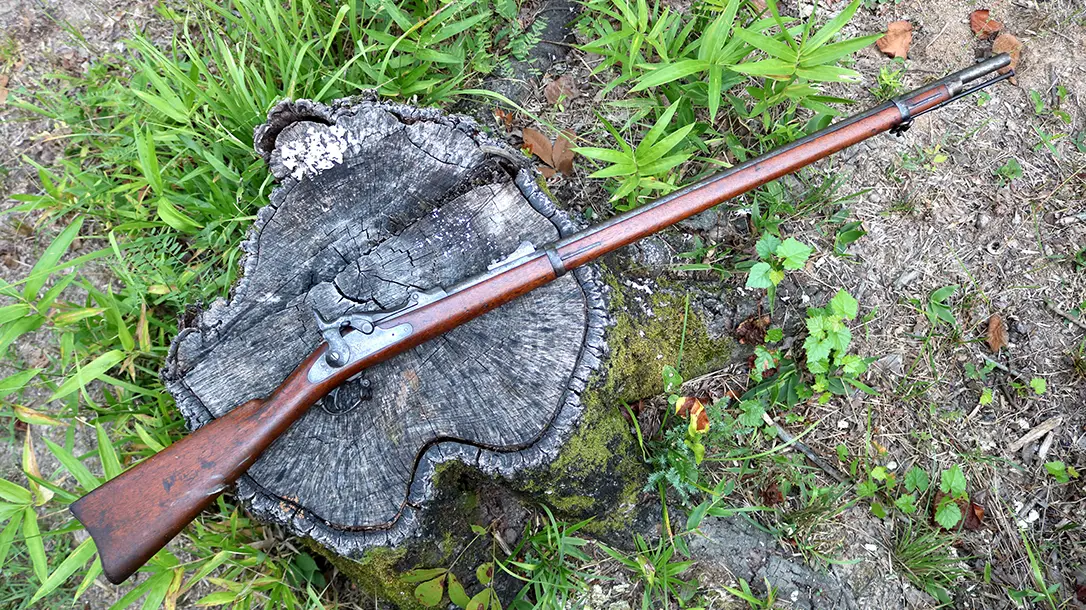Uncle Sam has always been a cheapskate. The $600 toilet seats get all the press. However, there are actually mechanisms in place designed to ensure that they are not profligate with our money. It is simply that those mechanisms obviously work better in some instances than in others.
1873 Trapdoor Springfield – Budget Fighter
I flew combat helicopters in the Army for eight years back in the 90s. We had some of the most lovely toys. Our survival gear, radios, flight helmets, and night vision goggles were pretty darn cool. However, the same could not be said of our personal weapons. As a pilot expected to be operating behind enemy lines, my sole defensive arm was a Beretta M9 pistol. I had a decent knife as well. However, that was a tool, not a weapon.
Advertisement — Continue Reading Below
I liked the M9. Still do. However, if I found myself cut off and alone fifty clicks into Indian Country, anxiously awaiting the CSAR (Combat Search and Rescue) package, I’d sooner be armed with something more substantial than a 9mm handgun and harsh language.
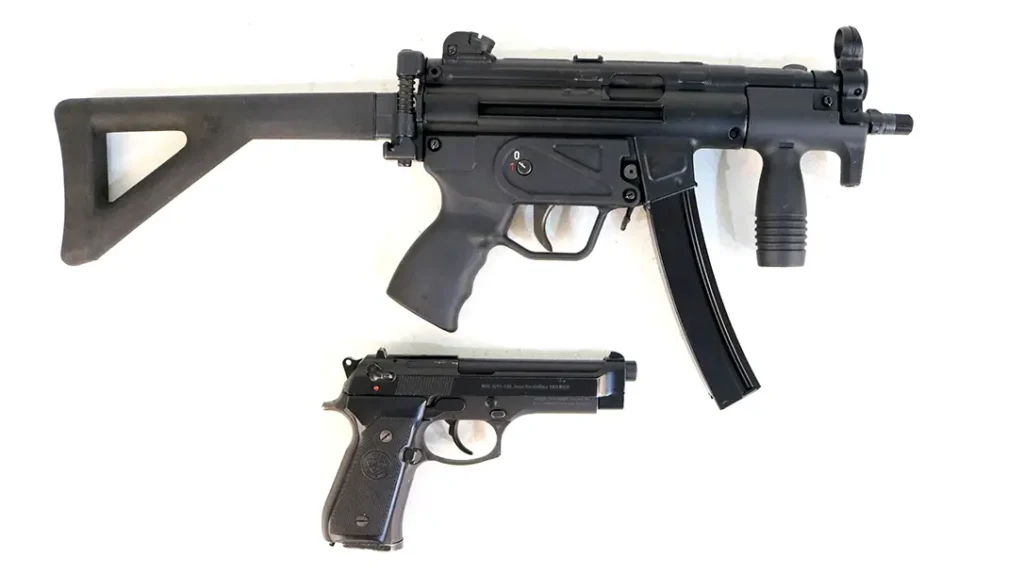
MP5K
There were plenty of great options at the time. HK’s MP5K PDW (Personal Defense Weapon) was specifically designed for this mission. It was and is a superb piece of kit.
Advertisement — Continue Reading Below
In 1995, an MP5K PDW cost about $1,050. That wasn’t cheap. However, at the same time, a single AMRAAM missile set us back $1.03 million. An F-15C Eagle could carry eight of those puppies. A single combat loadout of AMRAAMs for a single F-15 would be adequate to purchase 7,847 MP5K PDWs. In the grand scheme, it wouldn’t have taken a whole lot to get us some decent guns.
It was simply that, when it comes to small arms, the military is notoriously tight-fisted. They’ll throw cash at fighter planes and nuclear submarines by the barrel loads, then pick a combat handgun because its unit price is a couple of bucks less than the competition. Just in case you might think that is a modern phenomenon, let’s roll the way-back meter back to 1865 and see if anything has changed…
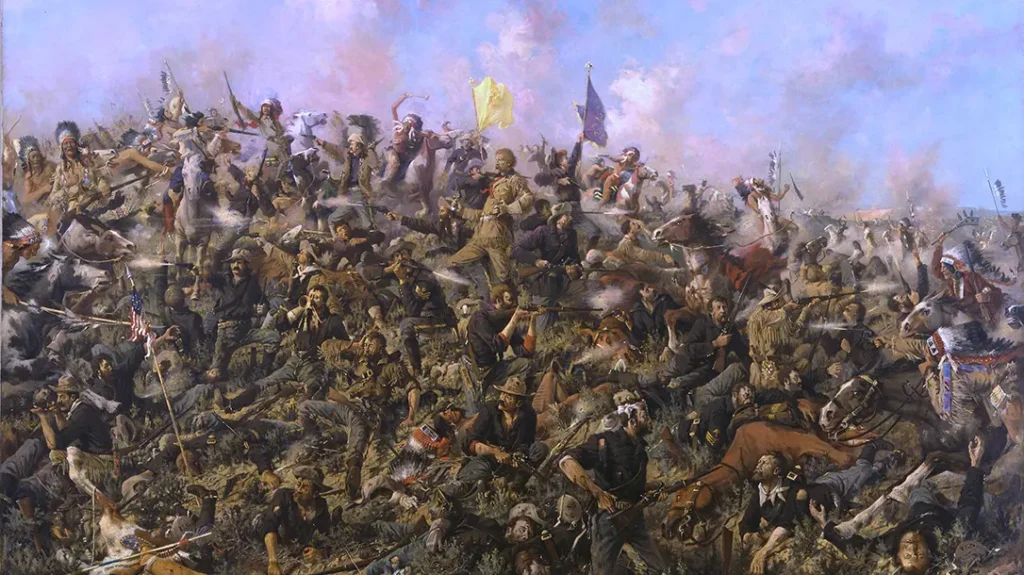
Advertisement — Continue Reading Below
America the Desolate Wasteland
In 1865, the country had come within a whisker of utterly destroying itself. The War Between the States had only recently reached its bloody terminus, and hundreds of thousands of troops had demobilized. Those soldiers had left their weapons behind to be catalogued in government warehouses. Most of those guns were single-shot muzzleloading percussion rifles. The 1864 Springfield was the archetype.
Like all major wars, this one had seen explosive growth in military technology. Nothing motivates a people like the prospect of utter subjugation. While the state of the art at the onset of the conflict was the single-shot percussion rifled musket, by war’s end, cartridge-firing repeaters were making their presence known. Particularly in the North, tubular magazine-fed weapons like the Henry and Spencer rifles began to see significant service. In the South, single-shot, cartridge-firing Burnside carbines equipped at least seven cavalry formations.
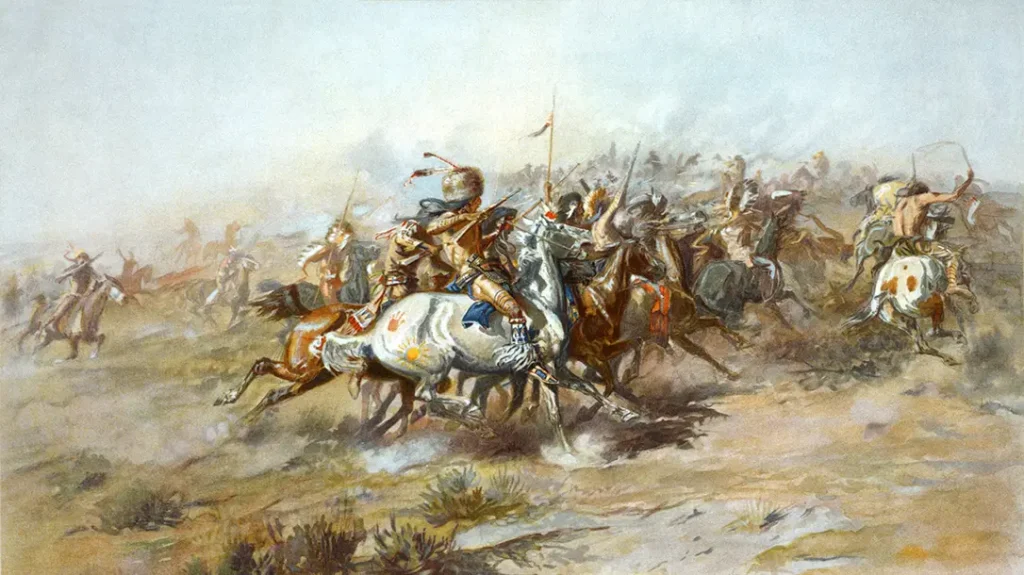
Advertisement — Continue Reading Below
Combat Multipliers
The increase in reliability and rate of fire offered by cartridge-firing rifles over their muzzleloading counterparts made these weapons serious combat multipliers.
Then, as now, the government was cheap when it came to small arms. Despite their recent victory, the federal government of the United States was stretched to its breaking point financially. The post-war Army was a shadow of its wartime self. However, it was still tasked with the occupation of conquered Southern territories as well as security in the untamed West.
In an effort to equip a small, agile force to undertake both of these arduous missions, the Army Chief of Ordnance, one General A.B. Dyer, tasked Springfield Master Armorer Erskine S. Allin to engineer a solution.
Advertisement — Continue Reading Below
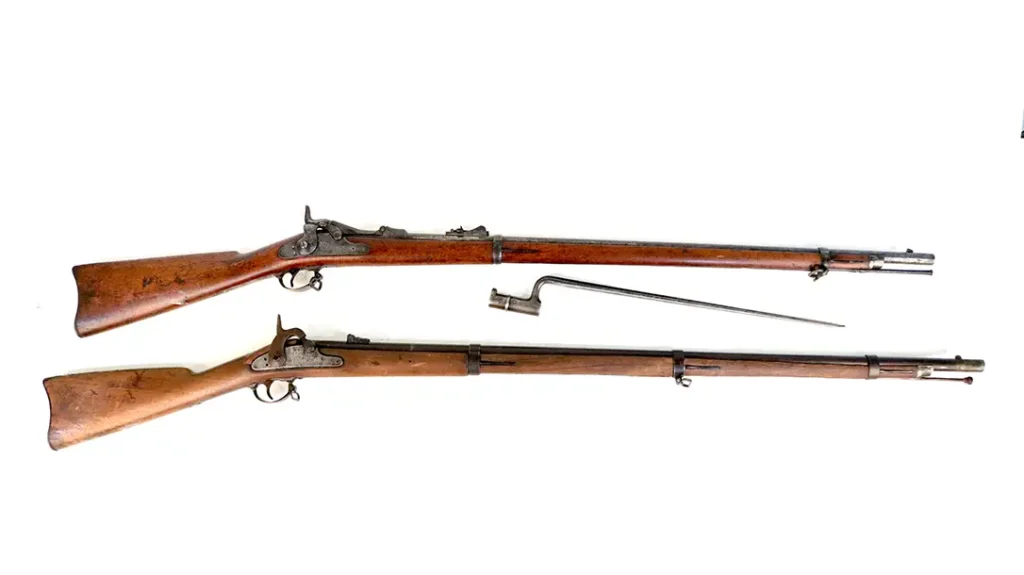
Details
The Spencer repeater was essentially a cavalry weapon. Uncle Sam needed a cartridge-firing infantry rifle. On 19 September 1865, Erskine Allin earned a patent for his eponymous Allin conversion. His solution was to mill the proximal end of the barrel of a Springfield musket away and replace it with a hinged breechblock that pivoted upward. The ample hammer still had to be manually cocked before firing. A generous right-sided thumb latch released the block for reloading, while a built-in extractor removed the fired cartridge case. These first Allin rifles fired a proprietary .58-caliber rimfire round.
The first contract was for 5,000 rifle conversions at $5 per gun. Considering a new scratch-built weapon would have set the government back around $20, this was the sort of math that kept the bean counters happy. At some point, somebody observed that the pivoting breechblock looked like a Trapdoor, and the name stuck. Aside from the novel breech mechanism, these Model 1865 cartridge-firing rifles were the same as the Civil War-era muskets that served as hosts.
Advertisement — Continue Reading Below

Allin’s Conversion
Mr. Allin’s conversion was indeed inspired. It was a clever and effective solution to the problem. However, it wasn’t perfect. Converting an M1861 muzzleloading musket to an M1865 breechloading rifle required 56 different machining operations at a time when metal working was not the refined industrial process it is today. The trapdoor mechanism had a tendency to rattle, and the extractor wasn’t as reliable as it should have been. That ponderous .58-60-500 rimfire cartridge was hardly the bee’s knees as well.
The M1865 was followed by the M1866. These weapons were bored out and sleeved with a .50-caliber iron liner that was brazed in position. This seems terrifying to me, but it nonetheless still worked fairly well. The new centerfire .50-70 cartridge it fired represented a significant improvement over its rimfire predecessor.
Advertisement — Continue Reading Below
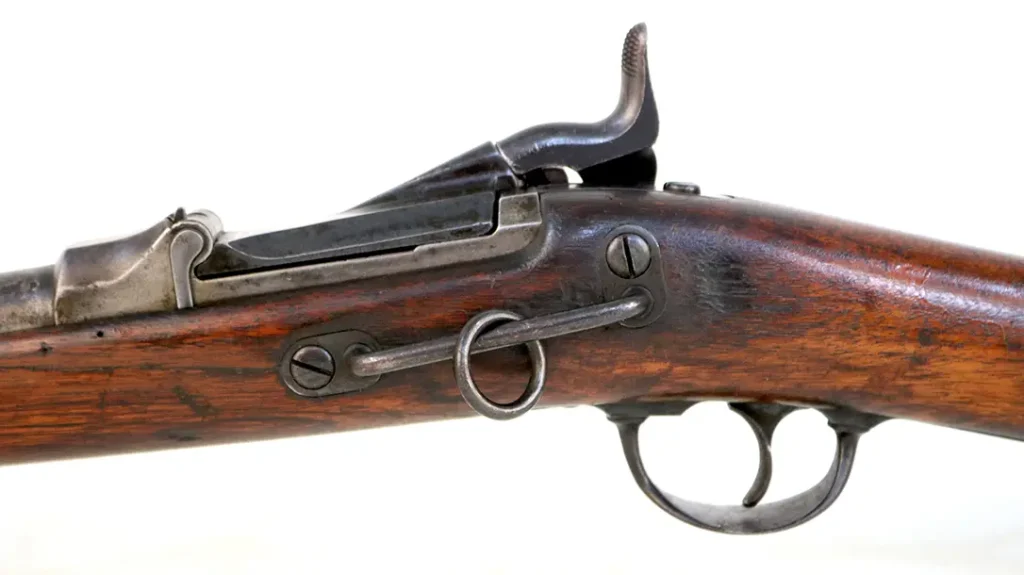
Evolution in Action
In the two years following 1867, Springfield remanufactured 52,000 guns. Half of this lot was issued to US forces deployed out West. The rest went to Europe for use in the Franco-Prussian War. By all accounts, the Model 1866 breechloader acquitted itself well.
By 1868, the federal government was starting to get its legs back underneath it to the point where it could afford a few new rifles. The M1868 utilized a handful of war-surplus components, but it was essentially a new-made weapon. The barrel was eight inches shorter than those of the Civil War-era M1861s, and a new spring-loaded extractor made the weapons much more reliable in action.
Advertisement — Continue Reading Below
These new rifles featured a folding leaf rear sight that was adjustable for range, and an extended leather sling made from two surplus slings sewn together. Springfield produced 52,145 copies of this new weapon.

New Designation
The M1868 was tweaked yet again in 1870 and earned a new designation, but the differences were trivial. The M1870 was produced in both rifle and carbine versions. In these new variants, we begin to see vestiges of the guns that ultimately pacified the West.
After some significant combat trials of the M1870, General Alfred H. Terry convened an Ordnance Board to finalize the specifications for the definitive military-issue rifle. This group of officers considered 99 different designs from both domestic and foreign manufacturers. While a variety of repeating actions were evaluated, cost was also an overriding consideration. The winner of the trials was the Model 1873 Trapdoor Springfield.
The M1873 Trapdoor Springfield was chambered for the new .45-70 round and built upon the ample foundation of all those legacy weapons that came before. Once perfected, the 1873 Trapdoor served as a standard-issue weapon for the better part of thirty years. While the Winchester lever-action repeaters were sexier, it was really the M1873 that saw the most action among US forces deployed in the West.
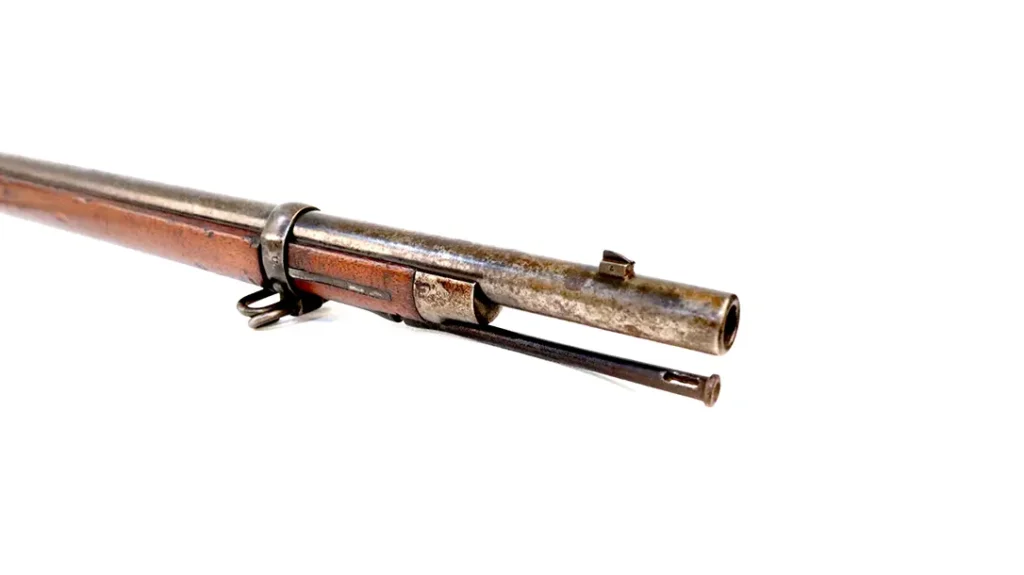
The Apex Predator
Firing tests demonstrated that a novice soldier could typically get off around eight aimed shots per minute with the M1873. With training and experience, that number climbed closer to fifteen. The record stood at twenty-five.
The .45-70 round that the M1873 rifles fired was a monster. The technical appellation was the .45-70-405. This indicated a 405-grain bullet with a .45-caliber bore diameter over 70 grains of black powder. Out of the full-length rifle, this round achieved muzzle velocities in the 1,350 feet per second range. A slightly lighter version was produced for the M1873 carbines to help tame recoil to a degree.
This round technically had a maximum range of around 2,500 yards. At 100 yards, it produced 1,525 foot-pounds of energy. That number dropped to 562 at 1,000 yards. Regardless, the .45-70 was an undeniable beast on the receiving end. These rifles were expected to produce around 3.4 MOA. That meant their rounds would fall within a 3.4-inch circle at 100 yards.

Superb Weapons
The M1873 rifles and carbines were indeed superb weapons. However, the pure copper cases used in the production of their ammunition caused problems. Poor quality control and suboptimal storage led to an unacceptable number of case separations on the battlefield.
Original U.S. Ordnance Department instructions for the management of case separations in Springfield M1873 rifles were: “Should the head of a cartridge come off in the act of firing, the best mode of extracting the shell is to take out a ball from a cartridge and reduce it with a knife or by rolling, so that it can be inserted into the muzzle of the barrel. Ram the ball hard with the ramrod when the breechblock is closed; this will upset the ball and fill the headless shell. Open the breechblock, and the ball and shell can be easily pushed out with the ramrod.” Um, yeah…
Forensic evidence accumulated from the Little Bighorn battlefield showed evidence of 3.4% of recovered cases having been pried out by troopers’ service knives. There was an anecdotal report of CPT Thomas French using the cleaning rod from his rifle to clear troopers’ deadlined weapons under fire. Switching the case material from copper to brass alleviated most of these problems. The use of brass in the manufacture of cartridge cases obviously persists to this day.
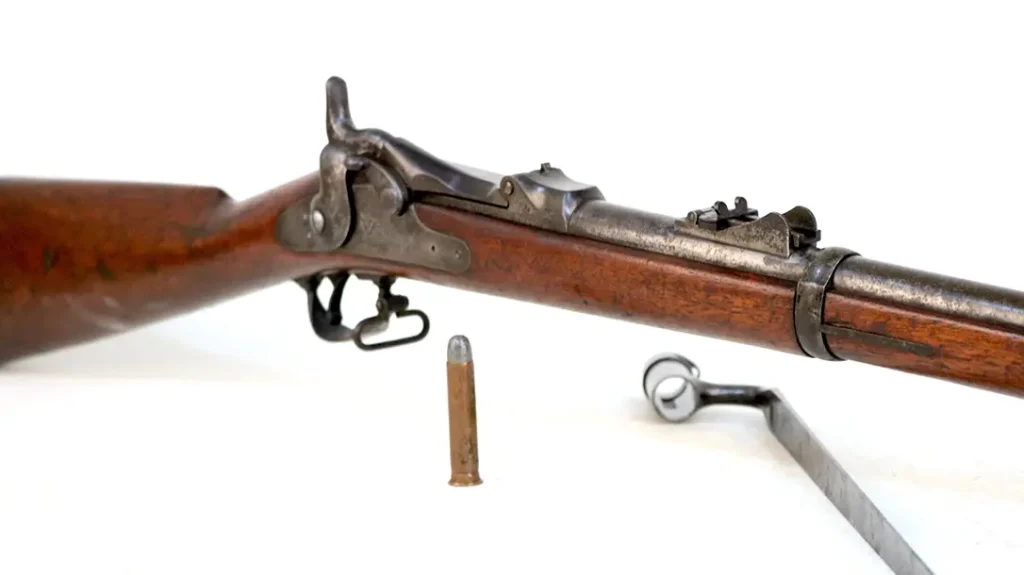
1873 Trapdoor Springfield
The Trapdoor Springfield was a seminal design. Driven by economic factors and years of mechanical evolution, the end result was an elegant and effective combat tool that served for decades. The 1873 Trapdoor Springfield was eventually replaced by the Krag-Jørgensen bolt-action rifle.
I poked around for the better part of a year looking for just the right examples of both the Trapdoor rifle and carbine. Like those bean counters of old, cost was a major factor in my acquisition of these weapons as well. However, hefting these old guns and imagining where they’ve been and what they’ve seen is akin to touching history.
WHY OUR ARTICLES/REVIEWS DO NOT HAVE AFFILIATE LINKS
Affiliate links create a financial incentive for writers to promote certain products, which can lead to biased recommendations. This blurs the line between genuine advice and marketing, reducing trust in the content.


